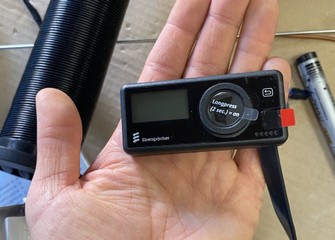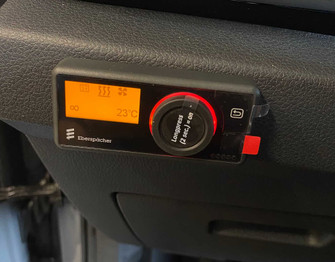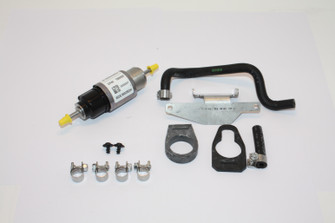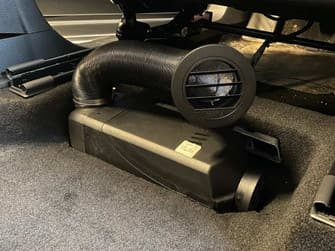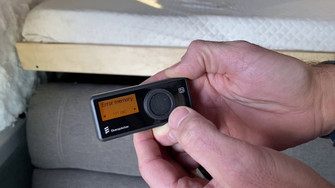Step-by-Step Guide to Proper RV Refrigerator Maintenance
Posted by Heatso on 3rd Jul 2023
Looking for ways to keep your RV refrigerator running smoothly? Proper RV fridge maintenance during your trip is more crucial than you might think.
STEP-BY-STEP GUIDE TO PROPER RV REFRIGERATOR MAINTENANCE
Looking for ways to keep your RV refrigerator running smoothly? Proper RV fridge maintenance during your trip is more crucial than you might think. It goes without saying that the refrigerator is an essential item during your road trip.
We will guide you through the step-by-step process of maintaining your RV refrigerator like a pro. With our practical tips you'll learn how to extend its lifetime and increase its performance.
Get ready to embark on a journey of worry-free refrigeration on the road. Let's dive in!
PRE-MAINTENANCE PREPARATION
Keep your RV level parked: This tip focuses on preventive maintenance, but it's one of the most popular tips from RVers. Keeping your RV level when parked is key to preventing future problems.
Perform routine inspections: It is crucial to check inside and outside of your fridge from time to time. Whether it is temperature drop or a clogged exhaust vent - things can happen on the road. It is best if you are aware of them as soon as possible.
Gather Your Tools: Gather the tools needed for the maintenance tasks and prepare before you actually clean your fridge. Grab a vacuum cleaner with a brush attachment, a coil brush, and a sponge for cleaning. If you are in a tight space, keep a flashlight handy as well.
Turn Off the Power: To prevent electrical problems, start by turning off the power supply to your RV refrigerator. Locate the dedicated circuit breaker or disconnect the power line to cut off the electricity.
Inspect the Refrigerator Door Seals: Carefully examine the door seals for any signs of wear, cracks, or gaps. Damaged seals can lead to a loss of cool air and ineffective cooling. If you notice any issues, it might be time to consider replacing the seals in your refrigerator.
Keep an eye on your maintenance: Stay up-to-date with your RV refrigerator maintenance using RV Life Maintenance tool. By setting up your maintenance schedule, you can enjoy your peace of mind while traveling.
INTERIOR CLEANING AND ORGANIZATION
Cleaning your RV refrigerator from the inside sometimes can be tricky, but it is certainly possible. A well-organized fridge is an important part of RV maintenance, so follow these steps to keep it in top shape.
Emptying and Removing Food Items
Start by fully emptying the refrigerator. Put expired food in a cooler with ice packs while you clean and discard expired items.
Cleaning Shelves, Drawers, and Racks
Remove the shelves, drawers, racks from the refrigerator and rinse them with warm water and mild detergent. Wash thoroughly and allow them to dry completely before placing them back into the fridge.
Sanitizing the Interior Surfaces
Wipe down the interior surfaces of the refrigerator and pay special attention to spilled or stained areas. For hard-to-remove stains, you can use a mixture of baking soda and water.
Organizing Food and Beverages
Place temperature-sensitive items, such as dairy and meat, in designated areas for better cooling. Consider using clear storage containers to keep similar items together and make the most of space you have. You've probably been putting off organizing your food items for a long time. This is your chance!
EXTERIOR CLEANING
Maintaining a clean exterior is as necessary as interior cleaning for your RV fridge to work properly.
The first step is to inspect the condenser coils, located at the back or underneath the refrigerator. Clean the coils to make sure they are not clogged or soiled.
Regularly clean the door seals with a mild detergent and water solution to maintain a proper door gasket. Finally, check the drip pan for any standing water or dirt.
If your refrigerator has a water filter, clean or replace it according to the instructions. Some RV refrigerators also have an ice maker - make sure the water line connections are secure and not leaking.
Remember - regular exterior cleaning boosts efficiency, prevents problems, and prolongs the life of your refrigerator.
TEMPERATURE SETTINGS AND CALIBRATION
Setting the right temperature for your RV refrigerator makes all the difference.
Aim to keep the refrigerator temperature between 34°F and 40°F. It's best to stay at the lower end when it comes to dairy products and meats. Make sure the temperature is not too cold so your fresh food doesn't freeze.
When it comes to the freezer, try to keep it at 0°F or even lower if possible. If it gets warmer than +5°F, your stored ice cream will become runny.
Before filling your fridge, let it run for at least 12 hours at the recommended temperature. If you haven't used your RV for some time, or if it has been in storage, this step is a must. If possible, cool your food in your home’s fridge before loading it into your RV’s fridge.
INSPECTION AND CLEANING FOR COMPRESSOR FRIDGES
Keeping your compressor fridge in top shape requires regular inspection and cleaning. The following steps will help you keep your RV refrigerator in good working order for your road adventure.
Understanding the Components of Compressor Fridges
Learn about the important parts of your compressor refrigerator. These include compressors, cooling coils, fins, and condenser fans. A good understanding of how they work will assist you in spotting potential problems.
Inspecting and Cleaning the Cooling Coils and Fins
First, you should turn off the power to your refrigerator. Then, remove any covers or panels to access the cooling coils and fins. To remove dust and dirt, use a vacuum cleaner with a brush attachment or a coil brush. The fridge's cooling system depends on these parts being clean.
Checking for Leaks or Damage in the Compressor Unit
Check the compressor unit for leaks or damage. Look out for oil stains, corrosion, or strange noises that might indicate a problem. Unless you are a pro in RV maintenance, it might be best to call a professional if you notice anything unusual.
Compressor Fridge Maintenance Tips
Here are some tips to help you maintain your compressor fridge. Regularly clean the exterior with mild detergent and water. Make sure the door seals or gaskets are in good condition.
As recommended by the manufacturer, replace the water filter. Ensure that there is enough space around the fridge for proper ventilation.
At least once a month, check the temperature settings and adjust them if needed to keep your fridge cool.
MAINTENANCE FOR ABSORPTION FRIDGES
You'll want to make sure your RV absorption refrigerator stays in good working order. Considering it's one of the most expensive appliances in your RV, it's worth it. Check out these top maintenance tips for your RV's absorption fridge.
What are the Main Parts?
It is useful to know the important parts of your absorption fridge. Among the main components are the burner assembly, cooling unit, flue, and ventilation system. It will be easier for you to look after them if you know what they are and how they work.
Cleaning the Burner Assembly and Flue
Turn off the gas supply and allow the burner assembly to cool completely. To remove debris or dust, use a soft brush or compressed air. Clean out a clogged or blocked flue. By taking care of these parts, you ensure efficient energy use and prevent losing cold air.
Checking and Adjusting the Flame
As soon as the burner assembly is clean, relight the pilot flame. Blue and steady flames are ideal. It may be necessary to adjust the air-to-fuel mixture if it is yellow or flickering.
Follo the instructions or get professional help to make the improvements you need. Proper flame adjustment always means better heating and cooling.
Guidelines for Maintenance
Here are some extra tips for keeping your absorption fridge running efficiently.
- Replace the door gasket if necessary if it shows signs of wear or damage.
- Make sure the fridge is level so it can work properly.
- Clean the condenser coils at the back or underneath the fridge.
- Check that the drain pan is clean and free of standing water or debris.
- If the refrigerator is not in use, shut it down, empty its contents, and crack the doors to allow air to circulate.
- Lastly, ensure that the fridge has a steady power supply by checking the electrical connections and connecting a surge protector.
CHOOSING THE RIGHT MAINTENANCE APPROACH FOR YOUR RV FRIDGE
When it comes to taking care of your RV fridge, it's important to find the solution that works best for you. Think about all the factors before making a decision.
The first step is to decide what type of fridge you want. Compressor fridges require frequent checks and cleaning of parts like cooling coils. On the other hand, absorption fridges need attention to the burner assembly and flue.
Identify your maintenance skills and comfort level. If you're confident in your DIY abilities, you can handle tasks like cleaning and checking the temperature. However, it is best to seek professional help if the issue is complex.
Think about how much time you have for refrigerator repairs. Regular maintenance requires dedication, so be honest with yourself.
Make prevention and proactive measures a priority. Regular cleaning, checking door gaskets, and monitoring temperature settings are good ways to prevent problems. By being proactive, you can avoid expensive repairs and unexpected breakdowns.
Now that you know everything about proper maintenance, you can keep your RV fridge in great shape. This will keep your food cool and preserve it during your road adventures.
CHOOSING THE RIGHT MAINTENANCE APPROACH FOR YOUR RV FRIDGE
Before any maintenance, the first step is to decide what type of fridge you want. When caring for your RV fridge, you'll need to consider your maintenance skills and how much time you have available. Compressor fridges require coil cleaning, while absorption fridges need burner and flue attention. To avoid costly, time-consuming repairs, prioritize preventive measures such as regular cleaning and temperature checks. With proper maintenance, your RV fridge will keep your food cool and preserved for your road adventures.

